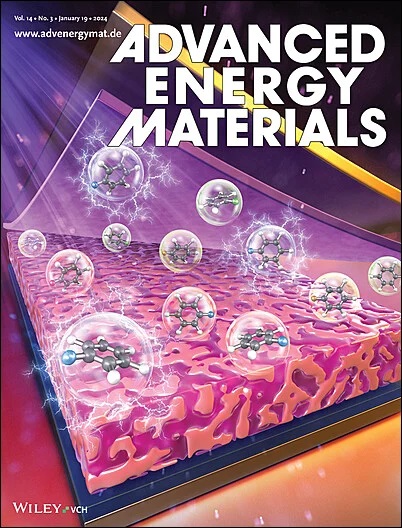Intermetallic Electrocatalysts for Small-Molecule Fuel Oxidation
IF 24.4
1区 材料科学
Q1 CHEMISTRY, PHYSICAL
引用次数: 0
Abstract
Intermetallic compounds with well-ordered crystal structures and precise stoichiometry are emerging as a transformative class of electrocatalysis. Existing reviews have primarily focused on intermetallic compounds for specific electrocatalytic reactions or their synthesis strategies, while a comprehensive perspective on how ordered structures contribute to performance across different electrochemical applications that share similarity remains underexplored. In this review, the recent progress is examined in intermetallic compounds, particularly focusing on their structure–property-performance correlations in four critical small-molecule fuel oxidation reactions, including hydrogen oxidation reactions, formic acid oxidation reactions, methanol oxidation reactions, and ethanol oxidation reactions. These reactions are central to sustainable fuel-cell technologies due to their high theoretical energy densities, relatively benign byproducts, and scalability for clean energy production. This review begins by highlighting the advantages of intermetallic compound nanocrystals over metal alloys, such as their unique crystal structures, exceptional thermodynamic stability, enhanced durability, improved intrinsic activity, optimized distribution of active sites, and benign scalability. Subsequently, their applications in these small-molecule fuel oxidation reactions are comprehensively discussed in detail. This review concludes with an outlook on future directions for the synthesis and application of intermetallic nanocrystals, emphasizing their critical role in advancing sustainable energy technologies.

小分子燃料氧化用金属间电催化剂
具有良好的晶体结构和精确的化学计量的金属间化合物正成为电催化的变革类。现有的评论主要集中在特定电催化反应的金属间化合物或它们的合成策略上,而关于有序结构如何促进具有相似性的不同电化学应用的性能的全面观点仍未得到充分探讨。本文综述了金属间化合物在四种关键小分子燃料氧化反应中的结构-性能-性能相关性,包括氢氧化反应、甲酸氧化反应、甲醇氧化反应和乙醇氧化反应。这些反应是可持续燃料电池技术的核心,因为它们具有较高的理论能量密度,相对无害的副产品,以及清洁能源生产的可扩展性。本文首先强调了金属间化合物纳米晶体相对于金属合金的优势,如其独特的晶体结构、优异的热力学稳定性、增强的耐久性、改进的内在活性、优化的活性位点分布和良好的可扩展性。随后,对它们在这些小分子燃料氧化反应中的应用进行了全面详细的讨论。本文对金属间纳米晶体的合成和应用前景进行了展望,强调了金属间纳米晶体在推进可持续能源技术中的重要作用。
本文章由计算机程序翻译,如有差异,请以英文原文为准。
求助全文
约1分钟内获得全文
求助全文
来源期刊

Advanced Energy Materials
CHEMISTRY, PHYSICAL-ENERGY & FUELS
CiteScore
41.90
自引率
4.00%
发文量
889
审稿时长
1.4 months
期刊介绍:
Established in 2011, Advanced Energy Materials is an international, interdisciplinary, English-language journal that focuses on materials used in energy harvesting, conversion, and storage. It is regarded as a top-quality journal alongside Advanced Materials, Advanced Functional Materials, and Small.
With a 2022 Impact Factor of 27.8, Advanced Energy Materials is considered a prime source for the best energy-related research. The journal covers a wide range of topics in energy-related research, including organic and inorganic photovoltaics, batteries and supercapacitors, fuel cells, hydrogen generation and storage, thermoelectrics, water splitting and photocatalysis, solar fuels and thermosolar power, magnetocalorics, and piezoelectronics.
The readership of Advanced Energy Materials includes materials scientists, chemists, physicists, and engineers in both academia and industry. The journal is indexed in various databases and collections, such as Advanced Technologies & Aerospace Database, FIZ Karlsruhe, INSPEC (IET), Science Citation Index Expanded, Technology Collection, and Web of Science, among others.
 求助内容:
求助内容: 应助结果提醒方式:
应助结果提醒方式:


